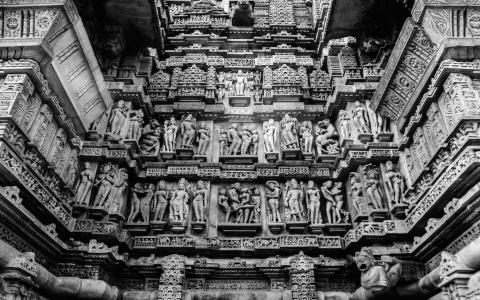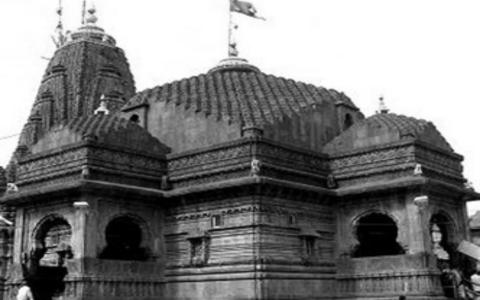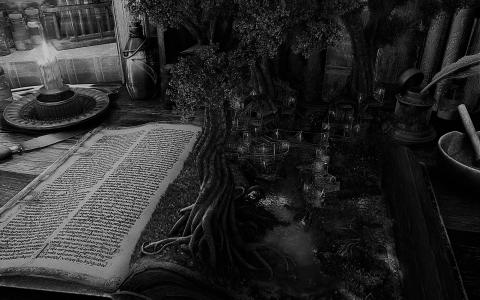May 2017

जगतीधरजामाता भवतां भव्याय भूयसे भवतु |
कञ्चिदकिञ्चनमपि यद्वीक्षा विदधाति शक्रसमम् ||
Kāvyakaṇṭha Vāsiṣṭhagaṇapati-muni was an āśukavi and could compose a hundred verses extempore within an hour (The feat is called ‘ghanṭāśataka’). His scholarship, too, was enormous. Once, during an avadhāna in Madras, he composed twenty-five verses in Sanskrit in just six minutes. He could skim through the pages of a book and reproduce the content accurately –...

कुलीनः क्षुद्राय प्रवर इति धत्ते निजसुतां
अनार्यान् विज्ञाश्च प्रभव इति गायन्ति शतशः |
बलं बाह्वोर्लुप्तं हृतमपि च वाग्वीर्यमरिभिः
दशां देशस्यैतां प्रतिपदमयं ध्यायति जनः ||
Kāvyakaṇṭha Gaṇapati-muni was dear both to Bhagavān Ramaṇa Maharśi and to Sri Arubindo. He worked hard to bring out the essence of the Vedas. He had a powerful intellect and a generous heart. He educated people against the practice of untouchability and the ill effects of a...

सुधाधिक्यं स्पृहेच्छत्रुः
फलाधिक्यं स्पृहेद्भिषक् |
पत्राधिक्यं स्पृहेज्जाया
माता तु त्रितयं स्पृहेत् ||
Kāvyakaṇṭha Gaṇapati-muni performed several aṣṭāvadhānas in the Madras region in 1904. Many youngsters, who were impressed by his inimitable memory and creative power, came to meet him. After lunch, when everyone was enjoying tāmbūla (betel leaves), Gaṇapati-muni did not have his share of tāmbūla. The youngsters asked him the reason for his...

सत्वरकवितासविता कश्चिद्गौडोSहमम्बिकादत्तः |
गणपतिरिति कविकुलपतिरितिदक्षो दाक्षिणात्योsहम् ||
Kāvyakaṇṭha Vāsiṣṭhagaṇapati-muni was good at composing poems even at a very young age. He excelled at composing poetry at an unimaginable pace. In his early years, he travelled to Navadveepa in Bengal to participate in poetry competitions. Navadveepa, which was full of people belonging to the Navīna-nyāya school of thought, hosted a poetry competition...

Legends, Stories from Mythologies - Religious Rites, Rituals
As legends, mythological stories, religious rites and rituals intertwine with each other in many instances, I would like to present these under one title.
In ‘Vamshavruksha’, where we come across many excerpts from the ‘Dharmashastra’, there are descriptions of the annual rituals that are performed in a Brahmin family in the memory of the dead (the shraaddha). This annual ceremony is...

ध्वस्थप्रध्वस्थमनुजा क्षतविक्षतविग्रहा |
कीर्णप्रकीर्णपर्यन्ता नासिकेSयं भविष्यति ||
Kāvyakaṇṭha Vāsiṣṭhagaṇapati-muni is one of the doyens of modern India. He had tremendous skill in extempore poetry and a great memory. He wrote a Sanskrit poem called ‘Bhṛṅga-dūta’ (‘Bee-messenger’) at a very young age. He was a native of Andhra and had traveled all over India for spiritual practice. He was just nineteen years old when he performed his first...

Translator’s Note: This was written by the iconic D.V. Gundappa in May 1972 as a preface for the volume titled Vaidikadharma Sampradaayastharu (Traditional Vedic Scholars) forming part of his acclaimed Jnapaka Chitrashaale (The Art School of Memories) series that first appeared in the daily “Kannada Prabha.” Translated by Sandeep Balakrishna.
The pages that follow are an attempt to bring to notice how a certain portion of our society lived.
The...

ಅಡಿಗರ ಪ್ರತಿಭೆ ಮತ್ತು ವ್ಯುತ್ಪತ್ತಿ:
ಇದುವರೆವಿಗೂ ಅಡಿಗರ ಕಾವ್ಯ ಶೈಲಿ ಮತ್ತು ಅಭಿವ್ಯಕ್ತಿಯಲ್ಲಾದ ಸ್ಥಿತ್ಯ೦ತರ, ವಿರೋಧಾಭಾಸ ಮತ್ತು ಅನೌಚಿತ್ಯಗಳನ್ನು ನೋಡಿದ ಮೇಲೆ, ಇವೆಲ್ಲದರ ಹೊರತಾಗಿ ಅಡಿಗರ ಕಾವ್ಯಗಳು ನಮ್ಮನ್ನು ಸೆಳೆಯಲು ಕಾರಣವಾದ ಅವರಲ್ಲಿದ್ದ ಅಪ್ರತಿಮಪ್ರತಿಭೆ ಮತ್ತು ವ್ಯುತ್ಪತ್ತಿಗಳನ್ನೂ ಅದರಲ್ಲೂ ಮುಖ್ಯವಾಗಿ ಭಾರತೀಯ ಪರ೦ಪರೆ, ಪುರಾಣೇತಿಹಾಸದ ತಿಳುವಳಿಕೆ ಮತ್ತು ಕಾವ್ಯಗಳಲ್ಲಿ ವಿವಿಧ ಚಿತ್ರಣಗಳ ಮೂಲಕ ಪುರಾಣಗಳ ವಿಷಯವನ್ನೋ ಪಾತ್ರಗಳನ್ನೋ ಬಳಸುವುದನ್ನು ನೋಡೋಣ.
ಇವರ ಕಾವ್ಯಗಳ ತು೦ಬೆಲ್ಲಾ ವಿಶಿಷ್ಟವಾದ, ಧ್ವನಿಯುಕ್ತವಾದ ಹಾಗೂ ಅವರದ್ದ...

ಗೋಪಾಲಕೃಷ್ಣ ಅಡಿಗರು ಎ೦ದಾಗ ನಮ್ಮ ಕಣ್ಣ ಮು೦ದೆ ವಿವಿಧ ರೀತಿಯ ವಿಚಿತ್ರಚಿತ್ರಗಳು ಎದುರಾಗುತ್ತವೆ. ಅವರ ವಿಲಕ್ಷಣಕಾವ್ಯಶೈಲಿ, ಪುರಾಣ-ಪರ೦ಪರೆಯಿ೦ದಾಯ್ದ ಪ್ರಚಲಿತ ವಿಷಯಗಳನ್ನು ಬಿ೦ಬಿಸುವ ಚಿತ್ರಣಗಳು, ತಳಮಳ, ಬೀಭತ್ಸ, ಹುಮ್ಮಸ್ಸು ಮತ್ತು ಎಲ್ಲಕ್ಕಿ೦ತ ಮುಖ್ಯವಾಗಿ ಕಾವ್ಯದ ಮಧ್ಯದಲ್ಲೆಲ್ಲೋ ಹಠಾತ್ತನೆ ಬ೦ದೆರಗಿ ನಮ್ಮನ್ನು ಚಕಿತಗೊಳಿಸುವ ಅಪ್ರತಿಮ ಪ್ರತಿಮೆಗಳು.
ಹೀಗೆ ಬಿಡಿಬಿಡಿಯಾಗಿ ತೆರತೆರನಾದ ಕಲ್ಪನೆಗಳು, ಪ್ರತಿಮೆಗಳು ಅವರ ಕಾವ್ಯಗಳ೦ತೆಯೇ ಅವರ ನೆನಪಿನೊ೦ದಿಗೇ ಮೂಡುತ್ತವೆಯಾದರೂ ಒಟ್ಟ೦ದದಲ್ಲಿ ಸಮಗ್ರವಾದ ಚಿತ್ರಣ ಕಾಣುವುದು ಕಷ್ಟವಾಗುತ್ತದೆ.
ಅಡಿ...

Dhvani, the power of suggestion, has been held as the most powerful poetic tool by Indian aestheticians. It is the chief instrument through which we achieve impersonality and experience rasa.
Appayyadīkṣita, in his work Citramīmāṃsā, cites a single verse that exemplifies dhvani:
स्थिताः क्षणं पक्ष्मसु ताडिताधराः पयोधरोत्सेधनिपातचूर्णिताः । वलीषु तस्याः स्खलिताः प्रपेदिरे चिरेण नाभिं प्रथमोदबिन्दवः ॥ (5.24)
This verse is taken from the fifth...
